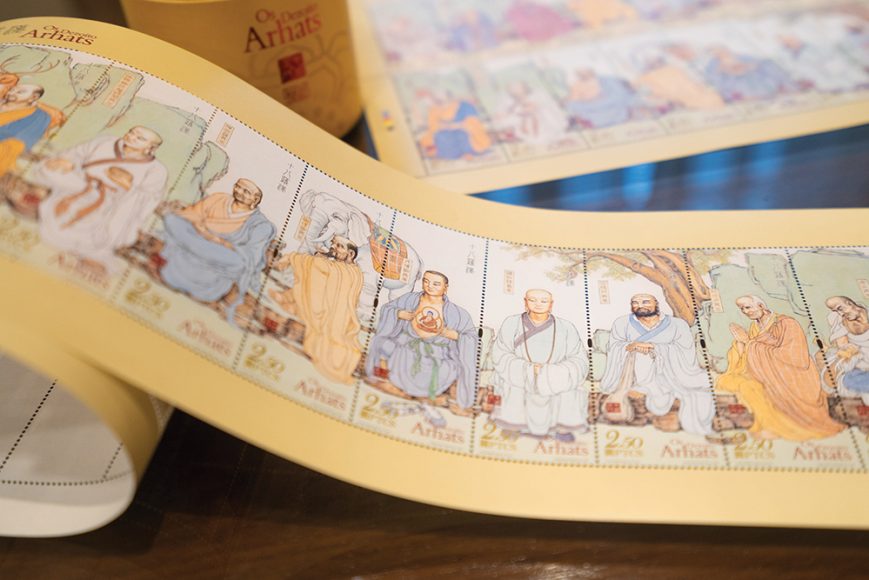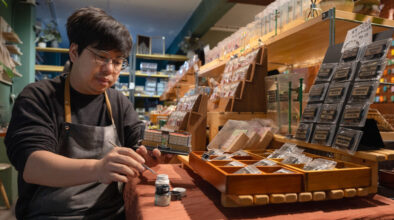Every Monday, in a room above the Communications Museum, Macao’s dedicated philatelists gather to discuss and exchange postage stamps. Philately – the study of such stamps and postal history – is alive if not exactly kicking in the city. Founded in 1980, the Macao Philatelic Club has about 150 members. Only around 20 are active, however; they’re in their late 30s to late 70s. All are passionate hobbyists who care about stamps for their nostalgic value, aesthetics, and uniquely tangible role in documenting history. These collectors are not in it for financial gain (though very rare stamps can sell for a lot), nor for stamps’ actual purpose: ensuring letters and parcels reach intended recipients.
The club’s general director, Huo Hui Xiao, has made a detailed study of Macao’s philatelic history. He personally owns a set of the first stamps ever issued in Macao – printed in 1884 (the same year Macao Post was established).
Macao’s stamps have evolved through several major phases. The first was between 1884 and Portugal’s 5 October 1910 revolution, when they depicted the Portuguese crown or monarch. After the monarchy was overthrown and Portugal’s First Republic was established, stamps had the word ‘REPUBLICA’ printed over the deposed king’s portrait. In 1913, all Portuguese overseas territories including Macao received a fresh set of stamps known as the ‘Ceres series’ (depicting the Roman goddess Ceres). Then came a series featuring a picture of Vasco da Gama’s ship, São Gabriel. In 1948, designs showing scenery from across the Portuguese territories emerged. And after 1976, the city’s stamps began to reflect local geography and culture.
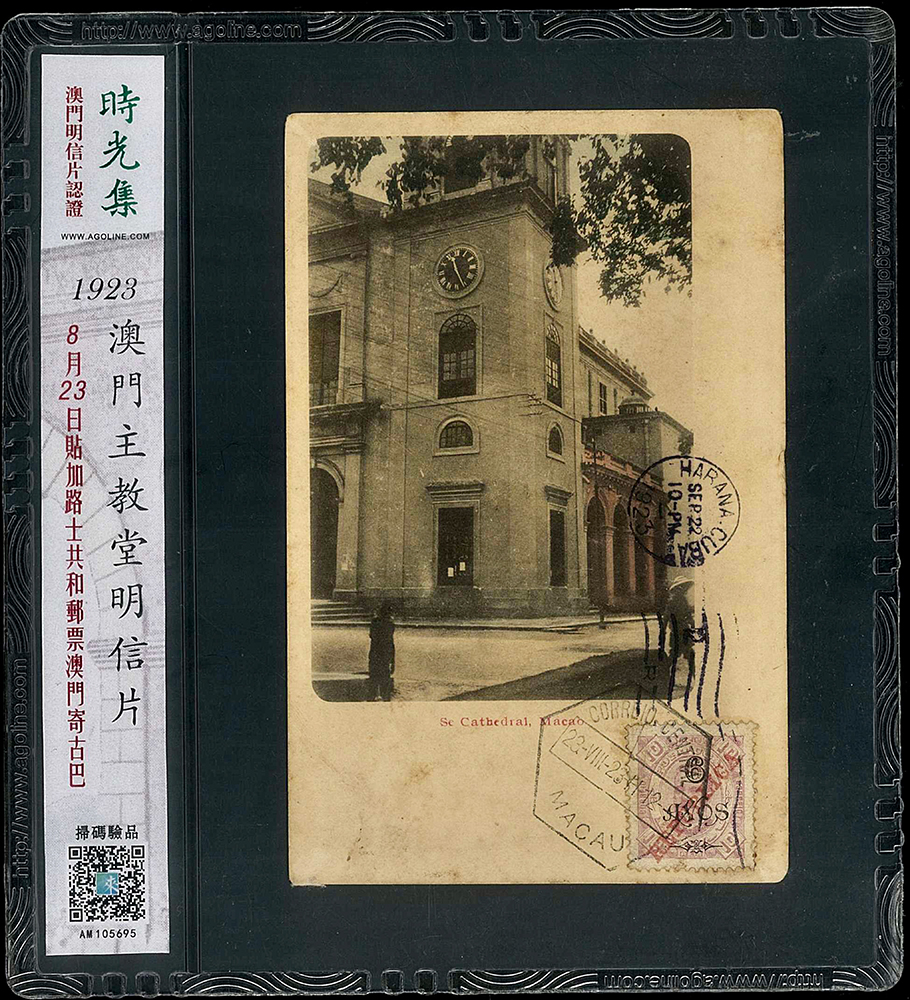
Before Macao returned to Chinese rule in 1999, stamps bore the words ‘REPÚBLICA PORTUGUESA’ in small print. After 1999, these were replaced with ‘MACAU, CHINA’. The variety of pictures on these stamps broadened to include local cuisines and landscapes, themes from the Guangdong-Hong Kong-Macao Greater Bay Area, landmarks from the mainland, and depictions of events from around the world.
The postage stamp business
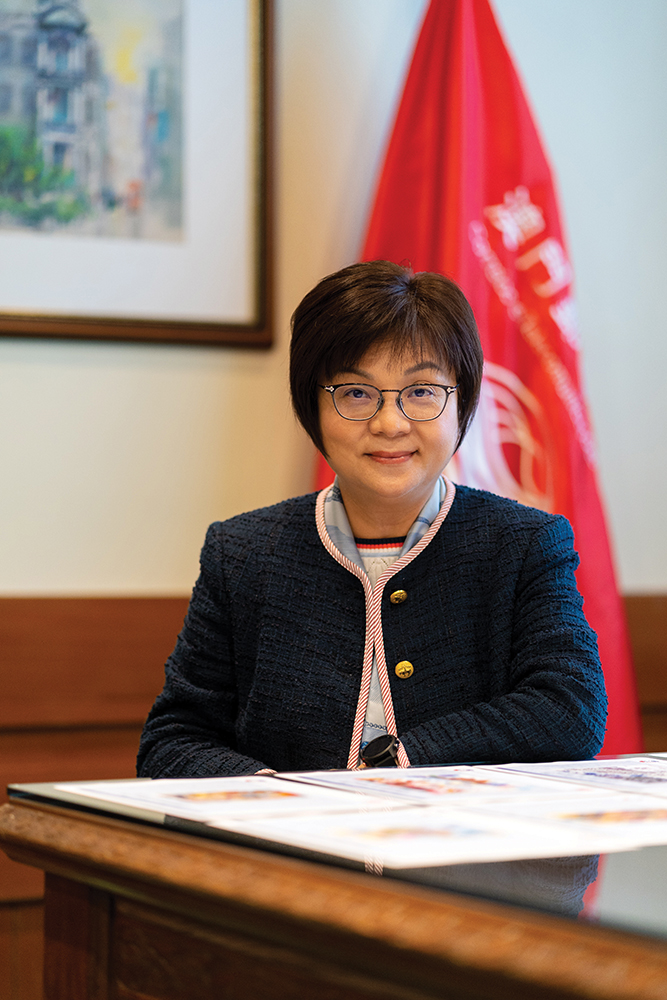
Benefiting from the philatelic market boom in the mainland, the Macao Post and Telecommunications Bureau, which is responsible for producing and selling Macao stamps, earned over MOP 300 million from stamp sales in 2015. The sale of philately products – from definite stamps, to commemorative stamps, to stamp albums – peaked between 2015 and 2016, says the director of Macao Post and Telecommunications Bureau, Derby Lau. Macao Post (a branch of the bureau). A stark contrast to an annual average of MOP 40-50 million these days. Stamp sales channels include Macao’s 16 post offices, 44 stamp vending machines, philately shops, the bureau’s website, and its agents both in the city and abroad. Then there are the annual stamp subscriptions people take out via the Bureau’s website and service counters.
“Stamp collecting is an economic thermometer,” Lau says. “Normally, we have a significant number of regular customers from Hong Kong and Guangdong, but due to Covid-19, we’ve seen a drop in sales from these areas. However, subscription sales remain steady.”
Macao Post releases a diverse range of philatelic designs with themes centered on Chinese and Western culture and customs as well as major events in Macao and the mainland – leaning heavily on local culture – to engage collectors, dealers, and the letter-sending public. One of the most popular is an annual series of stamps depicting the relevant animal of the Chinese zodiac (already in its fourth cycle). As 2022 is the Year of the Tiger, these stamps were illustrated with different tiger species. Stamps also cover the changing of seasons, showing seasonal flowers found in Macao. Another 2022 series featured local schools, some of which are century-old historic structures. “We’ve selected some famous ones, including Pui Ching, Santa Rosa de Lima, and Lingnan – these schools are part of our collective memories,” says Lau.
There are usually 250,000 stamps printed for each series, though strong demand can see that figure rise.
Stamps as an artform, and inspiration for art
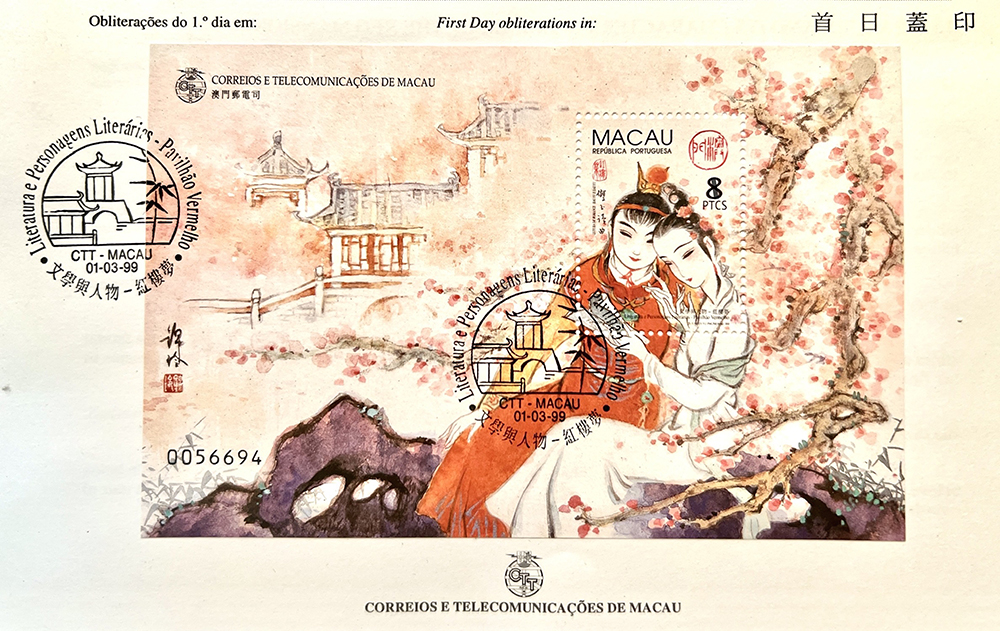
Each stamp printed in Macao bears its designer’s name. One of Macao Post’s most prolific designers is the painter Poon Kam Ling, whose first stamp series dates back to 1992. Poon, who is in her 60s, specialises in portraits of literary and religious figures. She says the lead time on stamp design is about half a year. First, Macao Post will assign her a theme. Then, Poon proposes the sorts of images she’ll create. Once approved, she starts drawing.
One of Poon’s favourite stamp series had the Chinese literary classic “Dream of the Red Chamber” as its theme. Poon studied the book meticulously before settling on a scene depicting the two lovers reading a banned book. “They read a banned book together secretly, showing they are soulmates,” the artist explains. “The blooming blossoms behind them are an expression of their love.”
Poon enjoys the artistic process behind stamp design, and says philatelists’ responses to her work warms her heart. She had a particularly successful design in the 1990s, depicting the goddess of mercy Kun Iam.“The stamps sold out very quickly, especially in the mainland,” Poon recalls. “It has something to do with the spiritual meaning of the subject.”
Each year, Macao Post holds the Draw My Story of Stamps Contest. Participants select a stamp design and recreate it. The competition’s original aim was to get younger generations engaged with the Communications Museum of Macao, but it ended up attracting entrants from all age groups. Lau says the quality of work produced is very high and that designs can be “remarkable”. Some entrants have even gone on to become official stamp designers. “We aim to promote stamps through this contest, in which participants must study our stamps and research their context,” Lau says.
Why collect stamps? The reasons are plenty
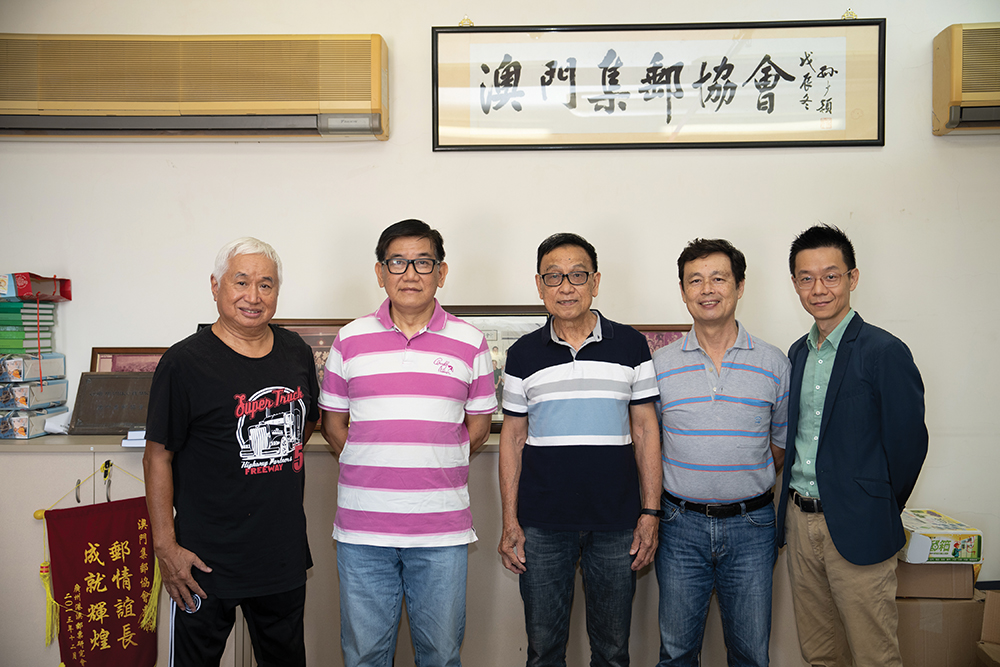
The Macao Philatelic Club’s members collect stamps for numerous reasons. A big one is the sense of history stamps themselves convey. But many members believe a ‘cover’ – the outside of an envelope, postcard, or package that displays stamps, postage marks, names, and addresses – is a more interesting journey to the past, or documentation of the present. Covers’ merging of postal and personal histories is a source of fascination for philatelists.
Philatelic covers are often contrived. Stamp collectors buy stamps, stick them to a slew of envelopes, then post them off to friends, family, and fellow philatelists around the world. Each recipient is supposed to send the letters back with stamps and postage marks from their own place of residence. Creating a collectable philatelic cover takes careful planning. The idea is to gather dates, place names, and images with special meaning. When the letters return, the original sender chooses the best cover for himself and swaps the remaining envelopes within the club.
One of the Macao Philatelic Club’s members, 71-year-old José de Sousa, has a cover that was posted on the exact day of Macao’s handover to China. It bears a special commemorative postal chop that was only valid for 17 days. He also owns a cover bearing two stamps produced during Portugal’s rule of the city, with a postage mark from the last day of that rule.
“Creating covers is a rewarding experience,” de Sousa says. “Whenever I flip through my covers, they are like a photo album of fond memories. They’ve travelled the world for me.”

Chan Kuok Kun is a club member in his 60s with an interest in political themes. During the 1980s and 1990s, he and a late member, Lee Man Yuk, worked closely together to create politically meaningful covers. They’d post letters at critical moments in history, for example, to collect postage mark dates of significance. Chan also recalls buying a small printer and some coloured ink to “print a small decoration [image] alongside the address to elevate a cover’s aesthetic value.”
On 31 March 1993, Macao’s Basic Law was adopted by the National People’s Congress in Beijing. That day, via a friend in Beijing, Lee and Chan posted letters to each other from the post office inside the Great Hall of the People, where the congress took place. The covers featured Chinese stamps and a printed image relevant to their subject.
Over the years, Chan has been interested in Sino-Portuguese relations. He’s created covers commemorating important historical events in China and Portugal’s shared history, such as the signing of the Sino-Portuguese Joint Declaration on 13 April 1987, which established the process for Macao’s handover. On that day, Chan posted a letter with Macao stamps and the wording of the event on an envelope to the law maker Zhou Nan. At the time, Zhou was the mainland’s vice-minister of Foreign Affairs and the top representative during negotiations for the transfer of Macao administration from Portugal to China. He signed Chan’s envelope and sent it back; the cover remains one of Chan’s prized possessions.
A future in jeopardy
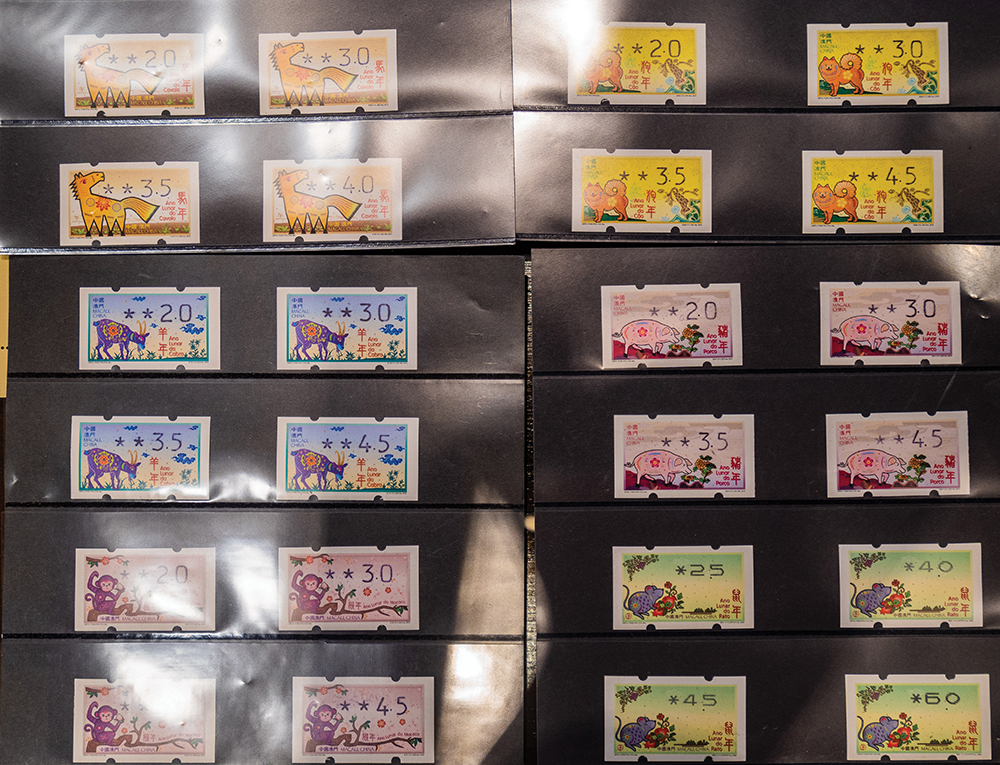
Philately is experiencing a boon amongst younger generations in some parts of the world, according to an article in the Guardian. They see it as a hobby tinged with nostalgia for the pre-digital era while simultaneously appreciating the highly ‘Instagramable’ nature of stamps and covers. But Lau from Macao Post says there’s only been a slight increase in younger philatelists in Macao in recent years. She points out that a good stamp collection takes time and money to build from scratch or buy at auction. Stamp collector de Sousa says youngsters he knows seem more interested in the amount of money a collection could fetch than stamps’ nostalgic or historic value. “We live in a fast-food culture, and they no longer know that thrill of anticipation [for a letter],” he says.
Huo, the Macao Philatelic Club’s general director, feels pessimistic about philately’s future: “The millennials have no idea of stamps, not even the writing style on an envelope. The trend is that stamps will simply become a historical record,” he says, with regret.
In 2018, the Macao Post and Telecommunications Bureau and the Macao Philatelic Club teamed up to host the Macao 2018 – 35th Asian International Stamp Exhibition. The event showcased 42 booths of international, national, and local philatelic products and collections, from 23 countries and regions. It attracted a decent showing of stamp dealers and collectors, proving that philately has indeed captivated many hearts in the region. Whether this will translate to a new generation of philatelic followers in Macao, however, remains to be seen.
